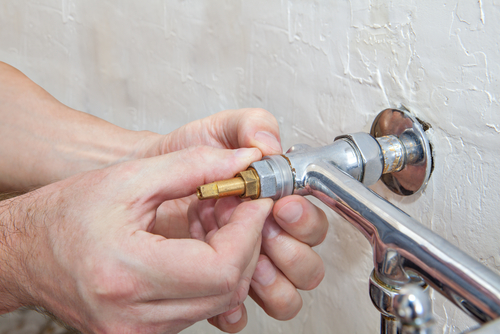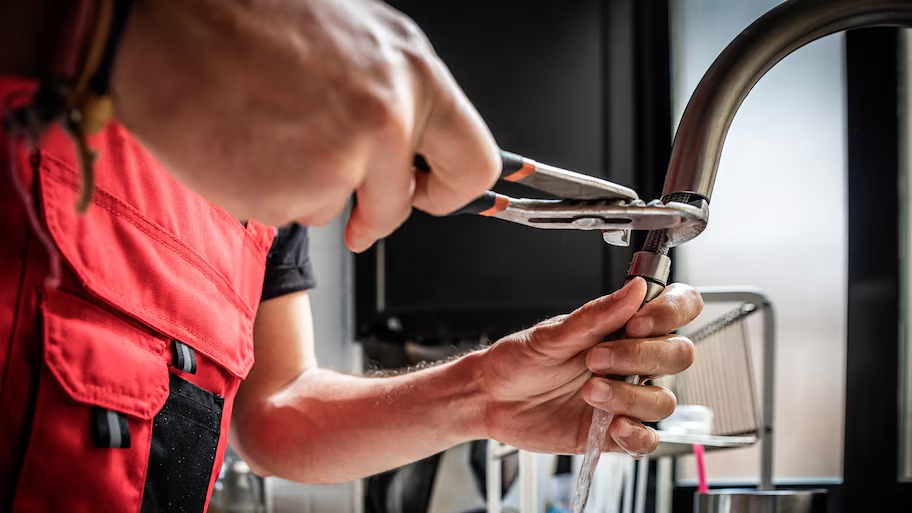Discovering the Significance of Dealing with a Dripping Faucet
Discovering the Significance of Dealing with a Dripping Faucet
Blog Article
This post further down pertaining to Should I Repair or Replace a Leaky Faucet? is especially remarkable. You should investigate for yourself.

Leaking taps could seem like a minor trouble, yet their influence goes beyond just the inconvenience of the noise. From drainage to sustaining unnecessary financial costs and health and wellness dangers, overlooking a trickling tap can bring about numerous effects. In this post, we'll explore why it's essential to address this common house concern immediately and efficiently.
Wastage of Water
Ecological Effect
Dripping taps contribute considerably to water wastage. According to the Epa (EPA), a solitary tap dripping at one drip per secondly can waste greater than 3,000 gallons of water per year. This not just strains water sources yet likewise influences environments and wild animals dependent on them.
Step-by-Step Guide to Dealing With a Dripping Faucet
Devices Called for
Prior to trying to deal with a leaking tap, gather the required devices, consisting of a flexible wrench, screwdrivers, substitute components (such as washing machines or cartridges), and plumber's tape.
Common Faucet Issues and Their Solutions
Identify the type of faucet and the particular problem triggering the drip. Typical issues include worn-out washing machines, rusty shutoff seats, or malfunctioning O-rings. Describe maker directions or online tutorials for step-by-step advice on fixings.
Financial Expenses
Boosted Water Bills
Past the ecological influence, leaking taps can blow up water expenses substantially. The gathered waste over time converts into greater utility costs, which might have been avoided with prompt repairs.
Prospective Home Damages
Moreover, extended trickling can lead to damage to components and surface areas surrounding the tap. Water accumulation can cause staining, rust, and also architectural concerns if left unattended, resulting in extra repair service expenses.
Wellness Issues
Mold and Mildew Growth
The constant presence of moisture from a dripping tap develops an ideal setting for mold and mildew and mildew development. These fungi not only compromise interior air high quality but additionally pose wellness dangers, specifically for people with respiratory system conditions or allergies.
Waterborne Conditions
Stagnant water in leaking taps can come to be a breeding place for germs and various other pathogens, raising the risk of waterborne illness. Pollutants such as Legionella bacteria prosper in stationary water, potentially resulting in serious ailments when consumed or breathed in.
DIY vs. Expert Repair service
Benefits and drawbacks of Do It Yourself Repair Service
While some may try to deal with a trickling faucet themselves, DIY repair work include their own set of difficulties. Without appropriate understanding and tools, DIY attempts can intensify the problem or result in insufficient fixings, extending the issue.
Benefits of Hiring a Specialist Plumber
Employing an expert plumber ensures that the underlying source of the leaking faucet is resolved successfully. Plumbing technicians possess the proficiency and tools to diagnose and fix faucet problems successfully, saving time and decreasing the risk of more damages.
Environmental Duty
Private Payment to Conservation
Taking obligation for dealing with dripping faucets lines up with more comprehensive initiatives toward water conservation and environmental sustainability. Every individual's actions collectively make a significant impact on protecting valuable resources.
Sustainable Living Practices
By prioritizing prompt repair work and adopting water-saving practices, people add to lasting living methods that benefit both existing and future generations.
Preventive Measures
Regular Upkeep Tips
To avoid leaking faucets, execute regular maintenance such as cleansing aerators, evaluating for leaks, and replacing damaged parts without delay. Furthermore, consider mounting water-saving tools or updating to more effective fixtures.
Value of Prompt Repair Works
Addressing trickling faucets as quickly as they're noticed protects against further water waste and potential damage, inevitably saving both water and money in the future.
Impact on Property Value
Assumption of Well-Maintained Residential Or Commercial Property
Preserving a residential or commercial property in good condition, including attending to upkeep concerns like trickling taps, boosts its regarded worth and charm amongst prospective purchasers or tenants.
Influence on Resale Worth
Characteristics with well-maintained plumbing fixtures, consisting of taps, command higher resale values in the property market. Attending to leaking faucets can add to a positive impact throughout home inspections and arrangements.
Final thought
Addressing a leaking faucet exceeds plain comfort; it's an essential action towards conserving water, minimizing financial expenses, and guarding health and home. Whether via DIY repair work or professional aid, acting to deal with dripping faucets is a small yet impactful method to promote accountable stewardship of resources and contribute to a healthier, much more sustainable future.
How to Fix a Dripping or Leaky Faucet
A leaking faucet is one of the most common problems that homeowners encounter, but it being commonplace doesn’t make it any less annoying. The constant drip drip drip of a leaking bathtub faucet, showerhead, or sink tap can disturb your home’s serenity. Left neglected, a dripping faucet can also result in higher water bills and discoloration or mold growth in your sink or plumbing fixtures.
Fortunately, you don’t have to be a trained plumber to know how to stop a dripping faucet. With some basic tools, replacement parts, and a little patience, leaky faucet repair is a breeze. In this article, we’ll explain what causes dripping faucets and how you can fix them.
What Causes a Leaking Faucet?
Kitchen and bathroom faucets come in all manner of designs, but most involve some combination of valves, O-rings, seals, and washers. The O-ring is usually the weakest link, but any one of these pieces can wear down over time. Heat, moisture, temperature fluctuations, minerals, mold, and movement can contribute to warping and corrosion, breaking the watertight seal. This just comes with the territory of being a homeowner. Everything is always subject to wear and tear, and some component parts of your appliances and fixtures need to be replaced on occasion. At least replacement O-rings are cheap!
More rarely, dripping faucets can be a symptom of excessively high water pressure. Were this the case in your home, you would probably notice that the leak is not isolated to one faucet. Water pressure issues are harder to resolve on your own. We recommend contacting a professional plumber if you suspect your water pressure is too high.
How to Fix a Dripping Faucet
Pipe wrench or monkey wrench Allen wrench set Screwdrivers Old towel or rag Shut off the water.
Before you do anything, you need to turn off the water to keep from drenching your kitchen or bathroom. You should find a valve under the sink and against the wall. Once you’ve turned this valve, try turning the faucet on to confirm that the water source has been cut off.
If you can’t locate your local valve for the faucet you’re working on, you can always shut off the water to the house at the main valve. Of course, this will prohibit anyone from using the sinks, showers, or toilets while you’re working on the faucet that’s giving you trouble.
Plug or block the drain.
You’ll be disassembling the faucet and removing some small bits of hardware. Plug the drain with a stopper or rag to avoid the possibility of a small screw falling into your P-trap.
Take apart the faucet assembly.
There are several varieties of kitchen and bathroom faucets, each with its own manner of assembly. For detailed instructions on how to disassemble your faucet, you can refer to the fixture’s manual or contact the manufacturer. If you know whether you have a ball, disc, cartridge, or compression faucet, you can find detailed schematics online.
In general, you need to begin by removing the faucet handles. You might notice a small screw that you’ll need to remove with a screwdriver or Allen wrench. If you don’t see any visible securing hardware, it’s likely hidden under a decorative cap that can be unscrewed or popped off with flathead screwdriver.
Remove each piece methodically, consulting a schematic when necessary. Take notes or arrange the pieces in such a way to make it easier to correctly reassemble the faucet later.
Remove the cartridge.
Once you’ve removed the handles and securing hardware, you should be able to remove the valve cartridge or stem. Some cartridges will slide right out. Other faucet models will require you to loosen a nut with a pipe wrench before you can remove the valve stem.
Examine the exposed hardware.
With the cartridge or stem removed, inspect the component parts. Check the rubber O-rings for wear and tear. Also examine the seat washer for corrosion or other damage. These pieces are usually the responsible parties for a dripping faucet, but it’s worth inspecting the other component parts while you have the faucet disassembled.
Find replacement parts.
Once you’ve identified which faucet component has failed, find an identical replacement. Your local hardware store should have O-rings, seat washers, and other standard components in stock. If you have a luxury or uncommon faucet, you may have to contact the manufacturer for a replacement part.
It’s a good idea to take your old parts with you to the hardware store so you can compare them with the store’s inventory and be sure you’re purchasing the correct replacement.
Reassemble the faucet.
With your new parts in hand, reconstruct the faucet and handles. Don’t be tempted to overtighten screws or nuts. You might think this could create a better seal, but it can instead damage or bend a delicate part of the assembly and create a new problem for you.
Turn on the water and test the faucet.
The only thing left to do is test your work. Unplug the sink, turn the water back on, and try the faucet. Congratulate yourself on a job well done!
https://www.libertyhomeguard.com/how-to-fix-a-dripping-or-leaky-faucet/

I was introduced to that editorial about 4 Common Reasons for a Leaky Faucet through a good friend on our other domain. Enjoyed reading our blog posting? Please share it. Help other people discover it. We treasure reading our article about Should I Repair or Replace a Leaky Faucet?.
Report this page